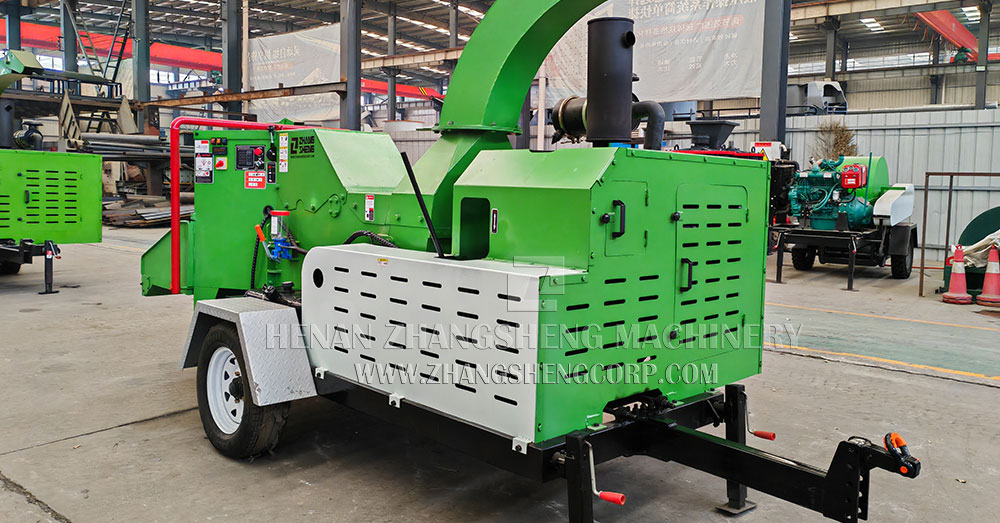Performing regular maintenance on your wood chipper will keep it running smoothly and extend its lifespan. Here’s a basic checklist to help you maintain your chipper:
Blade Maintenance
The blades of your wood chipper are its most important component, responsible for cutting the wood efficiently. To keep them sharp and in good condition, follow these steps:
-Sharpening Blades: Blades should be sharpened after 8-10 hours of use, or more frequently if you’re working with tough or dirty wood. Dull blades reduce cutting efficiency and force the engine to work harder.
-Replacing Blades: If the blades are cracked, chipped, or severely dull, they need to be replaced. Regularly inspect them for damage and replace them as necessary.
-Balancing Blades: Unbalanced blades can cause vibrations and additional strain on the engine. Ensure that blades are balanced properly after sharpening or replacing.
Cleaning the Feed System
Over time, debris can build up in the feed system, especially when processing sticky or sap-heavy materials. A clogged feed system can slow down operation and even cause jams. Here’s how to clean it:
-Inspect the Feed Chute: Make sure there are no blockages in the feed chute. If you notice wood debris or buildup, remove it using a brush or air compressor.
-Lubricate the Feed Mechanism: Ensure that moving parts in the feed mechanism are properly lubricated to prevent friction and ensure smooth operation.

Engine Maintenance
Whether your chipper is gas-powered or electric, the engine requires periodic maintenance to ensure reliable performance.
-Gas-Powered Engines: For gas models, change the oil regularly (usually every 50 hours of use or once per season). Check the air filter and clean or replace it if necessary. Spark plugs should be checked and cleaned periodically to ensure proper ignition. Also, make sure that fuel is fresh—old or stale fuel can damage the engine and affect performance.
-Electric Motors: For electric chippers, maintenance is simpler. Check the motor for signs of wear, and ensure that the power cord or battery is in good condition. If the machine has a brush motor, replace the motor brushes as they wear down over time.
Checking the Tires and Wheels (For Towable Models)
If you have a towable chipper, the tires and wheels should be checked regularly to ensure they are properly inflated and in good condition. Over time, tires can become worn out or deflated, which can make transporting the chipper difficult or unsafe. Inspect tires for punctures, cracks, or other damage and replace them as necessary. Check the wheel bearings and grease them to keep them in working order.
Cleaning and Debris Removal
After each use, it’s important to clean the wood chipper thoroughly. Sawdust, chips, and debris can accumulate on the machine, affecting both performance and safety.
-Remove Wood Chips: Use a brush or compressed air to clean out any wood chips that may have accumulated around the blades, feed chute, and engine. Excessive buildup of material can block airflow or cause overheating.
-Wash the Chipper: For heavy-duty cleaning, wash the exterior of the chipper with a hose. Avoid getting water into sensitive components like the engine or electrical connections.


